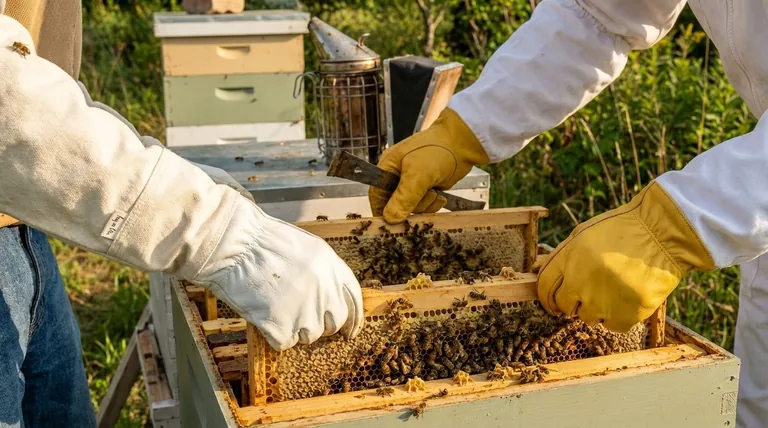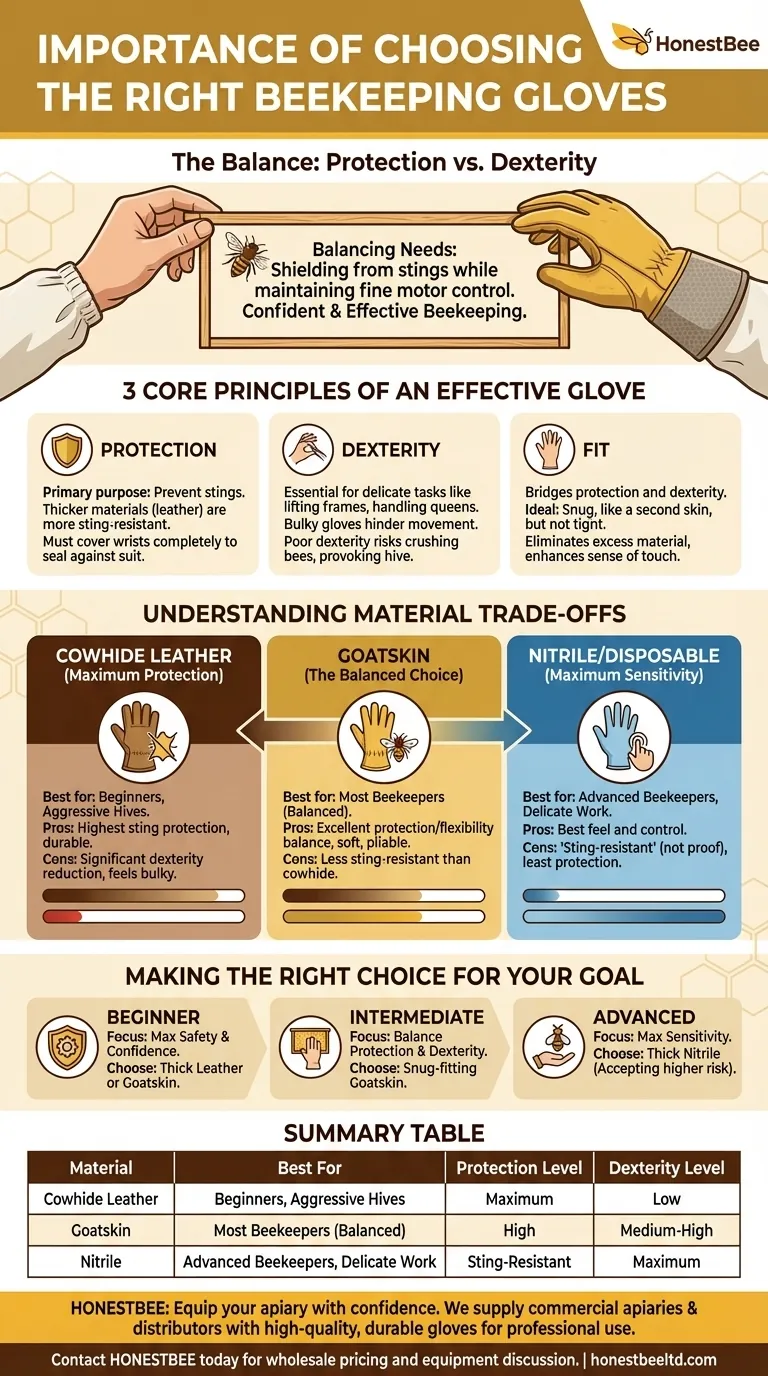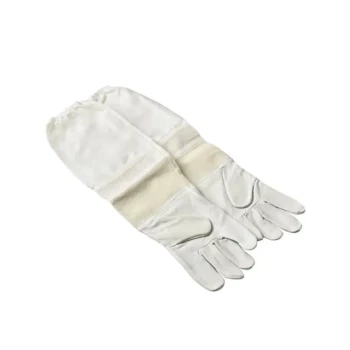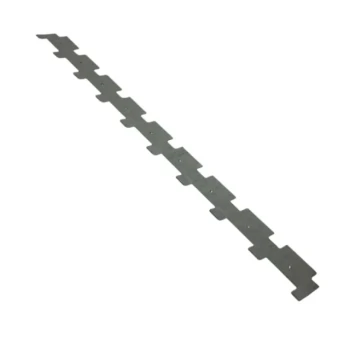Choosing the right beekeeping gloves is fundamentally about balancing two critical, and often conflicting, needs: protection and dexterity. The importance lies in selecting a glove that shields you from painful stings without sacrificing the fine motor control required to handle bees and delicate hive components safely and effectively. The right pair instills confidence and ensures the well-being of both the beekeeper and the hive.
The central challenge in selecting beekeeping gloves is not simply to avoid stings, but to find the precise balance between impenetrable protection and the tactile sensitivity needed to work efficiently. Your glove choice directly determines your confidence and competence inside the hive.

The Core Principles of an Effective Beekeeping Glove
An effective glove is more than just a barrier; it's a specialized tool. Its value is determined by how well it performs in three key areas: protection, dexterity, and fit.
Protection: Your First Line of Defense
A glove's primary purpose is to prevent stings. The material and construction are paramount to achieving this.
Thicker, more durable materials like leather are significantly more sting-resistant than thin fabrics such as cotton. A bee's stinger can easily penetrate weak or worn-out material.
Proper coverage is also non-negotiable. Gloves must extend well past the wrist to integrate seamlessly with your bee suit, preventing bees from crawling inside at the cuff.
Dexterity: The Ability to Work with Precision
Beekeeping involves delicate tasks, from lifting a frame without crushing bees to identifying a single queen in a crowd. This requires a high degree of dexterity.
Bulky or ill-fitting gloves make these movements clumsy and difficult. Poor dexterity not only frustrates the beekeeper but also increases the risk of damaging the hive or harming bees, which can provoke a defensive reaction.
Fit: The Bridge Between Protection and Dexterity
Fit is the single most important factor that unites protection and dexterity. The ideal glove should feel snug, like a second skin, but not tight.
A snug fit eliminates the excess material that can accidentally crush bees or snag on hive parts. It also enhances your sense of touch, allowing for more precise movements while ensuring no gaps are left open for a curious bee to explore.
Understanding the Trade-offs of Different Materials
There is no single "best" material for all beekeepers. Each type presents a unique set of trade-offs between protection, feel, and durability.
Cowhide Leather: Maximum Protection
Cowhide leather gloves are the traditional choice, offering the highest level of protection against stings. Their thickness provides peace of mind, especially for beginners or when dealing with an aggressive hive.
The trade-off is a significant reduction in dexterity and sensitivity. These gloves can feel bulky, making delicate tasks more challenging.
Goatskin: The Balanced Choice
Goatskin is a popular modern alternative that offers an excellent balance between protection and flexibility. It is durable and highly sting-resistant but is also softer and more pliable than cowhide.
This improved flexibility allows for greater dexterity, making goatskin a preferred option for many experienced beekeepers who need to perform a variety of tasks efficiently.
Nitrile/Disposable Gloves: Maximum Sensitivity
For tasks requiring the utmost precision, some advanced beekeepers use thick, high-quality nitrile gloves. These offer the best possible feel and control.
However, they provide the least amount of protection and are considered "sting-resistant," not "sting-proof." They are best used for quick, delicate work by beekeepers who are comfortable with the increased risk.
Making the Right Choice for Your Goal
Your ideal glove depends entirely on your experience level and comfort with the bees.
- If your primary focus is maximum safety and confidence (Beginner): Choose thick leather or goatskin gloves to minimize stings while you build confidence and learn bee behavior.
- If your primary focus is balancing protection with dexterity (Intermediate): Select a pair of snug-fitting goatskin gloves that offer robust protection with more flexibility for delicate work.
- If your primary focus is maximum sensitivity for delicate work (Advanced): Consider using high-quality, thick nitrile gloves for tasks requiring the most feel, accepting the higher risk of stings.
Ultimately, the right glove is the one that empowers you to work calmly and competently, ensuring the safety of both you and your colony.
Summary Table:
| Material | Best For | Protection Level | Dexterity Level |
|---|---|---|---|
| Cowhide Leather | Beginners, Aggressive Hives | Maximum | Low |
| Goatskin | Most Beekeepers (Balanced) | High | Medium-High |
| Nitrile | Advanced Beekeepers, Delicate Work | Sting-Resistant | Maximum |
Equip your apiary with confidence. The right gloves are a cornerstone of safe and productive beekeeping. At HONESTBEE, we supply commercial apiaries and beekeeping equipment distributors with high-quality, durable gloves designed for professional use. Let our expertise help you select the perfect gear for your specific needs.
Contact HONESTBEE today for wholesale pricing and to discuss your equipment requirements.
Visual Guide

Related Products
- Beekeeping Gloves Goatskin Leather with Long Cotton Sleeve for Beekeepers
- Goatskin Leather Beekeeper Gloves with Vent Long Sleeve for Beekeeping Honey Bee Sting Proof Protection
- Goat Skin Leather Bee Sting Proof Beekeeping Gloves with Canvas Sleeve
- Mesh Ventilated 3 Layer Goatskin Beekeepers Gloves for Beekeeping
- Professional Galvanized Hive Strap with Secure Locking Buckle for Beekeeping
People Also Ask
- Why are protective gloves important in beekeeping? Boost Confidence & Safety in Your Apiary
- What are the advantages of goatskin leather gloves for beekeeping? Superior Sting Protection for Your Apiary
- Why do some experienced beekeepers choose not to wear gloves? For Superior Dexterity & Hive Welfare
- What are the features of ventilated bee gloves? Stay Cool & Dexterous in Warm Weather
- What is the safest way to handle frames in beekeeping? Master Gentle Handling for a Calm Hive



















